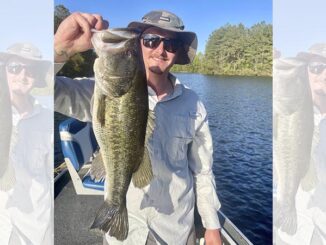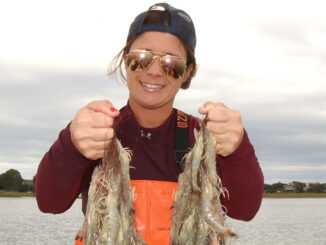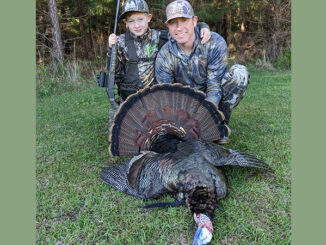
Current and cover are keys to success
When anglers think about the best places in the Lowcountry to catch speckled trout, several immediately come to mind. The Wando and Cooper rivers, Bulls Bay and even the Ashley River are tops on the list. One location that always seems to escape the top of the list is the Stono River. But that isn’t for a lack of trout.
Capt. John Boy Koonce of Shoal Bandit Charters guides on the Stono year-round. And he is perfectly happy with the ranking his home waters have among the local angling community.
“I don’t think this area is really overlooked. I mean, plenty of anglers fish it and catch a lot of trout here,” he said. “But I do believe the Stono doesn’t get as much pressure as some of the other areas around Charleston. And some areas certainly don’t get fished much at all.”
From his home base at the St. John’s Yacht Harbor on John’s Island, Koonce can access both ends of the Stono. Some days that can be a plus. That’s because the two ends frequently fish quite differently.
“The Stono is part of the Intercoastal Waterway, and (it) runs all the way down to Wadmalaw Sound on one end,” said Koonce. “If you run the river from where I’m at in the other direction, it runs into the Kiawah River. Tons of creek mouths, feeder creeks, shell rakes, big oyster bars and other structure give you big points in the rips where speckled trout love to hang out.”
The Stono is a long river, and it’s saltwater all the way
“It’s also a really long river, and it doesn’t die out into freshwater. So it’s saltwater all the way through. That’s a plus if we get a lot of rain inland. On the other hand, you’ve got more mud and silt in the Stono than in the other local rivers. It’s always a little darker. You have to know how to fish it to consistently catch trout here,” he said.
As September rolls over into October, Koonce said that trout tend to move away from their grass-hugging ways and out into the current a little more, especially when mullet begin moving through. Finding fish tends to be a matter of covering a lot of water until that first trout gives up the school’s location.
“I call it spot-casting,” he said. “Cast a little bit here, let your bait float down, cast a little bit there, on either side of the river, and just let the current just bounce you around, looking for that first bite. Trout are going to be running in a school, so you get one bite, there’s going to be more than one fish there. Once you target how they’re holding on a spot, you’ll be able to catch multiple fish. Then, if the bite slows down, move a little further off the bank or cast back behind you — let it drift until you find them again.”
Match the hatch
The best baits for trout are those that match the hatch. In October, shrimp are still king. Finger mullet run a close second. Koonce typically starts out a search pattern using live bait. Once he finds the trout, he switches over to artificial lures. If the weather is cooperative, meaning rainy or foggy, anglers have a very real chance of catching trout on topwater lures.
“Live shrimp is my bait of choice,” he said. “I prefer live shrimp over anything else this time of year. But this area is loaded with tons of shrimp. Every creek mouth’s got them. Every little sand shoal’s got them. And every mud flat is loaded with shrimp. We’ll start with the shrimp to try to get the bite going. Then maybe switch over to a D.O.A. or plastic grub.”
Because he’s competing with Mother Nature for the understandably attention-deficient trout, Koonce employs a tactic that real shrimp don’t come equipped with — noise makers.
“I use a popping cork to call their attention away from the other shrimp,” he said. “If the current is running real hard, I cast across current and pop that thing a lot quicker and a lot harder. Bear in mind you need to keep the slack out of the line. Because the more aggressive you pop that thing, the more aggressive the bite is. In conditions where I’m ripping it real fast, I’ll put an extra split shot on there to keep the shrimp down a little bit deeper. On the slack tides, I throw it out and just pop it three or four times. Then I let it drift, pop it three or four times, in 10- to 15-second intervals.”
Fish when the tide is moving
Koonce has better luck catching trout in the Stono when the water is higher on the bank and when it’s moving. Accordingly, he plans his trips around the best tides that coincide.
“I like the bottom two hours of the rising tide and the first two hours of the falling tide,” he said. “Trout normally bite a whole lot better when there’s current flowing and that water’s moving. Plus, in the Stono, you’ve got all the rips coming off the points and shell rakes. And baitfish are coming into and out of the grass.”
Late September and into October is normally not a difficult time to catch bait shrimp. Scott Hammond, manager of Haddrell’s Point Tackle in West Ashley, said his store keeps plenty of live shrimp in stock anyway. Hammond also is quick to point his customer to either end of the Stono in the fall.
Fish around hardbottom and tree stumps
“You won’t find a lot of hardbottom areas that make up many of the other areas around Charleston,” he said. “But there’s tons of small creek mouths that are lined with oyster points. There’s probably more hardbottom on the Wadmalaw Sound end than anywhere in the Stono. The sound also has a bunch of old tree stumps that are in the water. And those can be trout magnets during the fall.”
Hammond’s favorite tactic is nearly the reverse of Koonce’s. He does all of his searching with a D.O.A. shrimp under a popping cork and then switches over to live bait to entice the fish.
“You don’t have to do a whole lot with a live shrimp,” he said. “Position your boat upcurrent from one of the creek mouths or points and free-line it across the area. Of course, that’s also a great way to fish the D.O.A., without the cork. Cast it upstream, keep a tight line, and let the bait work it’s way down to the fish.”
DESTINATION INFORMATION
HOW TO GET THERE/WHEN TO GO — The Stono River is most-easily accessed by three public boat ramps on the western outskirts of Charleston. Wappoo Cut is on Wappoo Creek between West Ashley and James Island, off SC 171 near the intersection of SC 171 and SC 700. Battery Island is off SC 171 at the end of Sol Legare Rd. on James Island, south of Charleston. The John P. Limehouse ramp is on County Rd. 20 under the bridge from to John’s Island west of Charleston. Trout fishing should be at its best through the month of October and into November as the water cools and shrimp and baitfish continue to migrate through.
TECHNIQUES — Look for speckled trout to be holding a little further off the bank in late September and into October. Fan-casting live shrimp under a popping cork will help locate schools of trout. Once a school is pin-pointed, you can save bait by switching over to artificials such as a D.O.A. shrimp or another soft-plastic bait and work the school until it moves off. Pay attention to the mouths of creeks or ditches along the river, as well as long oyster points where a tidal rip has been established. Under the right conditions, a topwater bait such as a Badonk-A-Donk or Zara Spook Jr. will produce strikes.
GUIDES/FISHING INFO — Capt. John Koonce, Shoal Bandit Charters, 843-425-2939, www.shoalbandit.com; Haddrell’s Point Tackle, West Ashley, 843-573-3474, www.haddrellspoint.com. See also Guides and Charters in Classifieds.
ACCOMMODATIONS — Holiday Inn Express, 1943 Savannah Hwy, Charleston, 888-465-4329; Town and Country Inn & Conference Center, 2008 Savannah Hwy, Charleston, 800-334-6660; La Quinta Inn & Suites, Charleston Riverview, 11 Ashley Pointe Dr., Charleston, 843-556-5200.
MAPS — Maps Unique, 910-458-9923, www.mapsunique.com, Sealake Fishing Guides, 1-800-411-0185, www.thegoodspots.com.









Be the first to comment